Whitten Sabbatini (b.1990) is a photographer currently living in Memphis, Tennessee. His work is included in The Do Good Fund’s collection of contemporary Southern photography. He received his BFA in photography from Mississippi State University in 2013, where he was the recipient of the College of Architecture, Art & Design Undergraduate Student Research Award for his series Of the South, as well as a National Conference Student Scholarship from the Society for Photographic Education. His ongoing project There’s Worse Things Than Being Alone was recently featured on Oxford American’s website as a part of their series Eyes On The South.
We recently had a chance to sit down and talk with Whitten about how his work is affecting his post-college life and where he plans to take his photography in the near future. The following is an interview transcribed from a phone conversation.
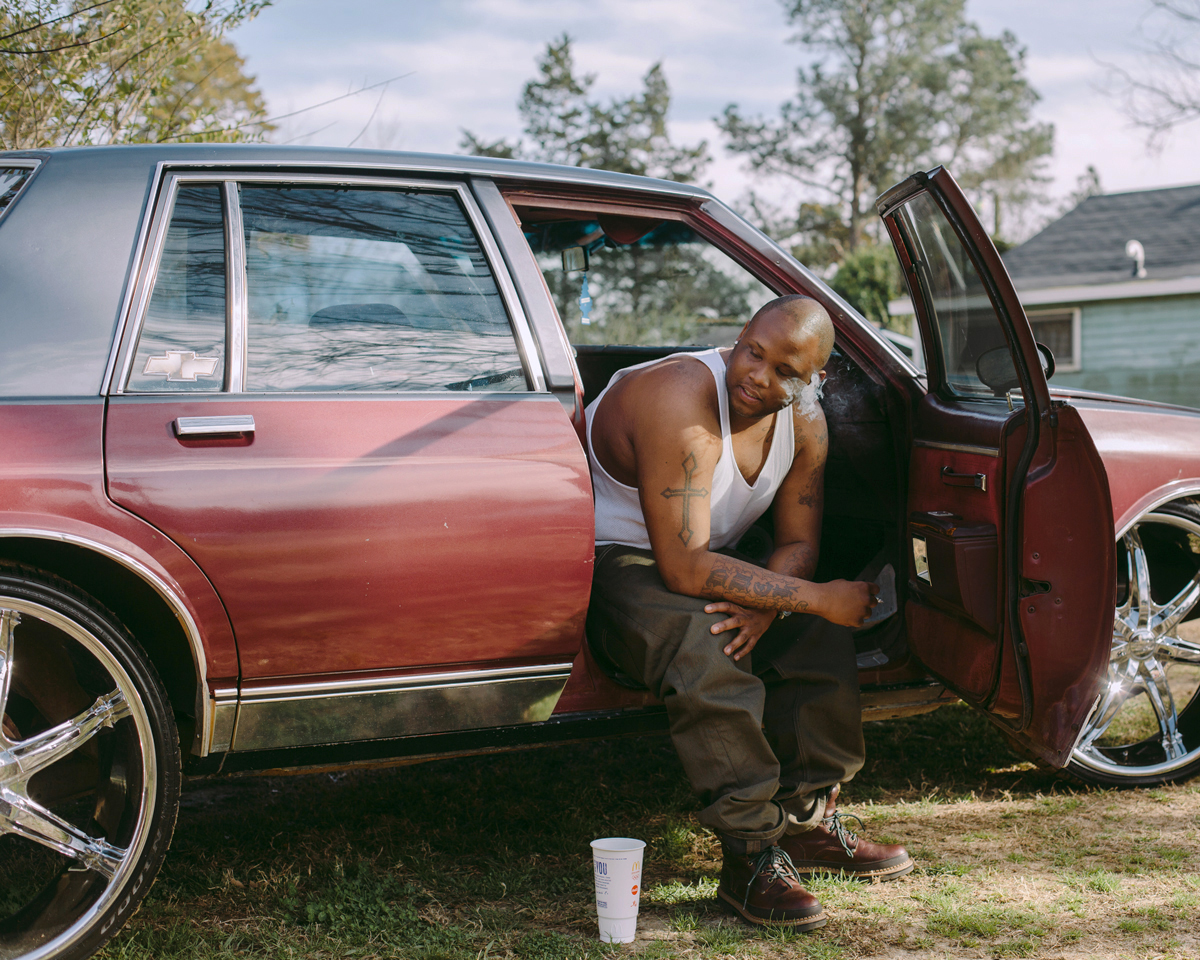
Bran w/ Cigarette
Hey Whitten, how’s it going?
Ah this is so crazy; I’m doing really well thanks for doing all of this.
So, where are you originally from?
Well, I’m from Jackson Mississippi, about two hours south of where I went to school.
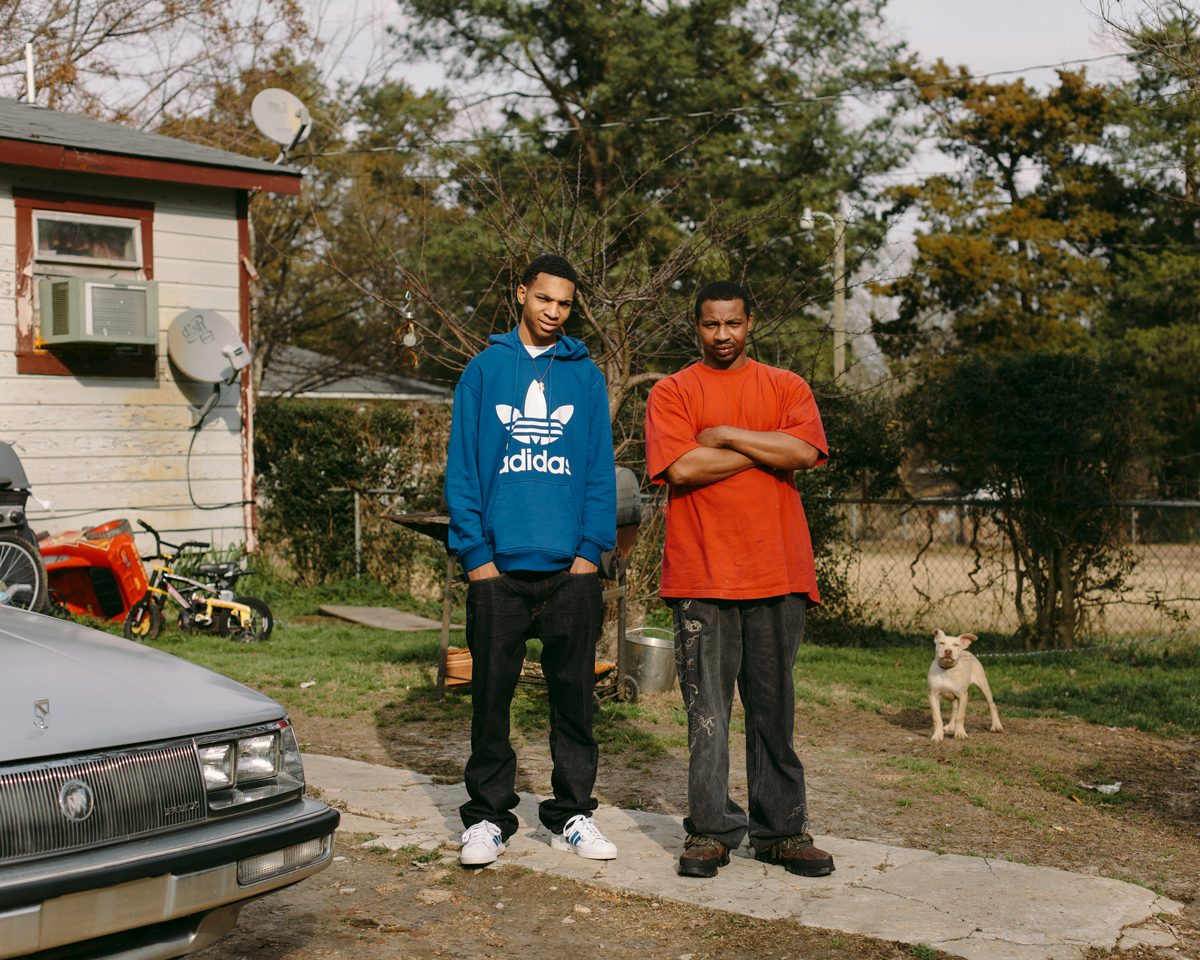
Cody & Jason
Oh! Very cool I was not expecting you to be from Mississippi I don’t know why.
Oh Really? [Hahaha]
I just had a feeling that maybe you weren’t, but that’s very cool. So did you know that you wanted to go to Mississippi State for photography? Was that a natural choice since you’re so close to the school?
I guess I started taking photographs when I was 18. I went to a community college for two years so I was like 20 when I got done there and then I knew that all of my other friends went to the other school in Mississippi [Ole Miss] so really I just kind of went to Miss State because I didn’t really know anyone that was going there. Essentially, it was the idea of me going to a new place where I didn’t know anyone that intrigued me about going to Mississippi State.
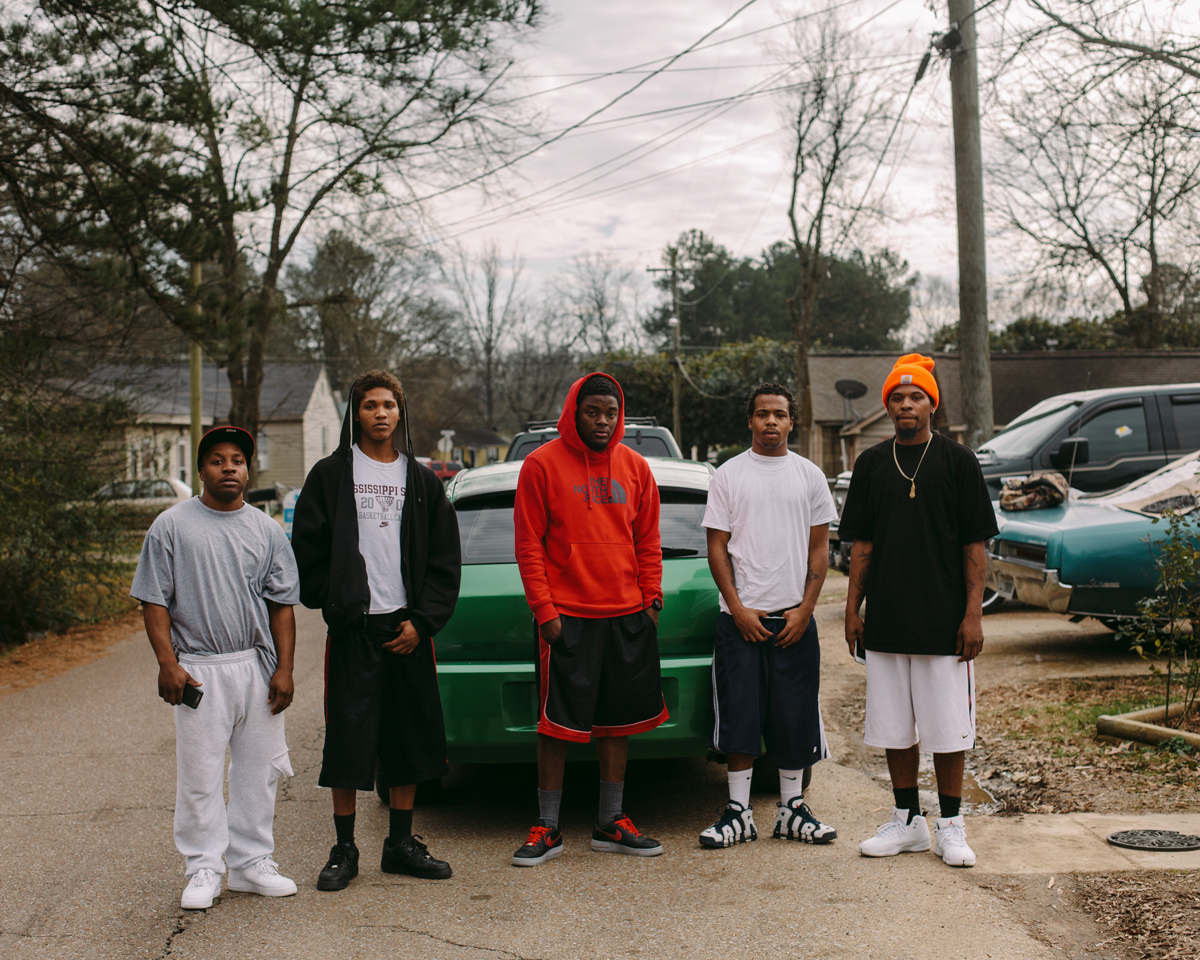
Vaunte, Cobie, Anthony, Javin, & Jay
And so would you say that there is a good photo program at Miss State? Did you find the faculty helpful for this body of work and others that you made in school?
Looking back, I’m really glad I went there. My first year, which was my junior year, we got a visiting professor who ended up being a very good friend and certainly a mentor. He was great for me. He was very supportive and challenging.
That’s nice. It’s very good to have someone like that. What was his name?
Dominic Lippillo
Very cool. We will have to check him out.
Yeah, he’s a great guy and great mentor.

Cadillac, Central Avenue
So lets start talking about your work specifically. How did you decide whom to photograph and how did you approach the people that you did?
Hmm… that’s well, ok well first of all let’s start out with saying that the reason I enjoy making portraits is because I’m so intrigued by everyone. I go to the coffee shop every morning to prepare for my day. I love being able to sit and drink my coffee and the opportunity to just watch people and listen. I don’t think the experience of meeting someone for the first time will ever get old, especially a stranger I photograph.
One of the reasons I chose to photograph the people I did, was their immediate proximity to me. We only lived a couple of miles apart but I knew that our daily experiences were incredibly different. I photographed men, more so than women I think, partly because of my own experience of being a male. When I was searching for men to photograph, I was looking for distinct outfits, cars, and environments that I attribute to my view of the contemporary African American male in the rural South. When approaching and portraying these men, it only comes from a place of complete respect and admiration. This is very important to me.

Jerry, After One Month
That’s fantastic. So did you find that a lot of people were curious as to who you were or what you were doing with a camera in that area?
Yes, certainly, and there’s all this, “what’s this guy doing” or is he up to no good?

American Flag, Lamar Avenue
Right, right.
A lot of times it was “are you the police?” and I would have to do my best at letting them know I wasn’t and hope to gain their trust. Back then, I would just tell them I thought they were beautiful or that the light was really nice and just that I’m this interested curious photographer. So sometimes I would have to coax them a little or show them old photographs that I had. Sometimes I would be really lucky and they would say, “Oh, that’s my boy!”
Oh! No way!
Yeah and so they liked [the photographs] and thought they were interesting and unique so they had seen that I was trusted by these people so then they could let their guard down some and they wanted their own photograph.

Peaches’ Friend, Mitchell
At first we assumed that you made these photogaphs with a view camera. Is that what you used? If not, what format did you shoot?
I actually shot with a Canon 5D MKII and a 50mm lens, always, and so that’s awesome that you asked that! I always hope that my work could read as being shot with a view camera. I observe a scene with attention to detail in mind, and how the edges of the frame are thought out. But in reality, I’m actually shooting quite quickly and not setting up a bulky camera or any equipment on a tripod.
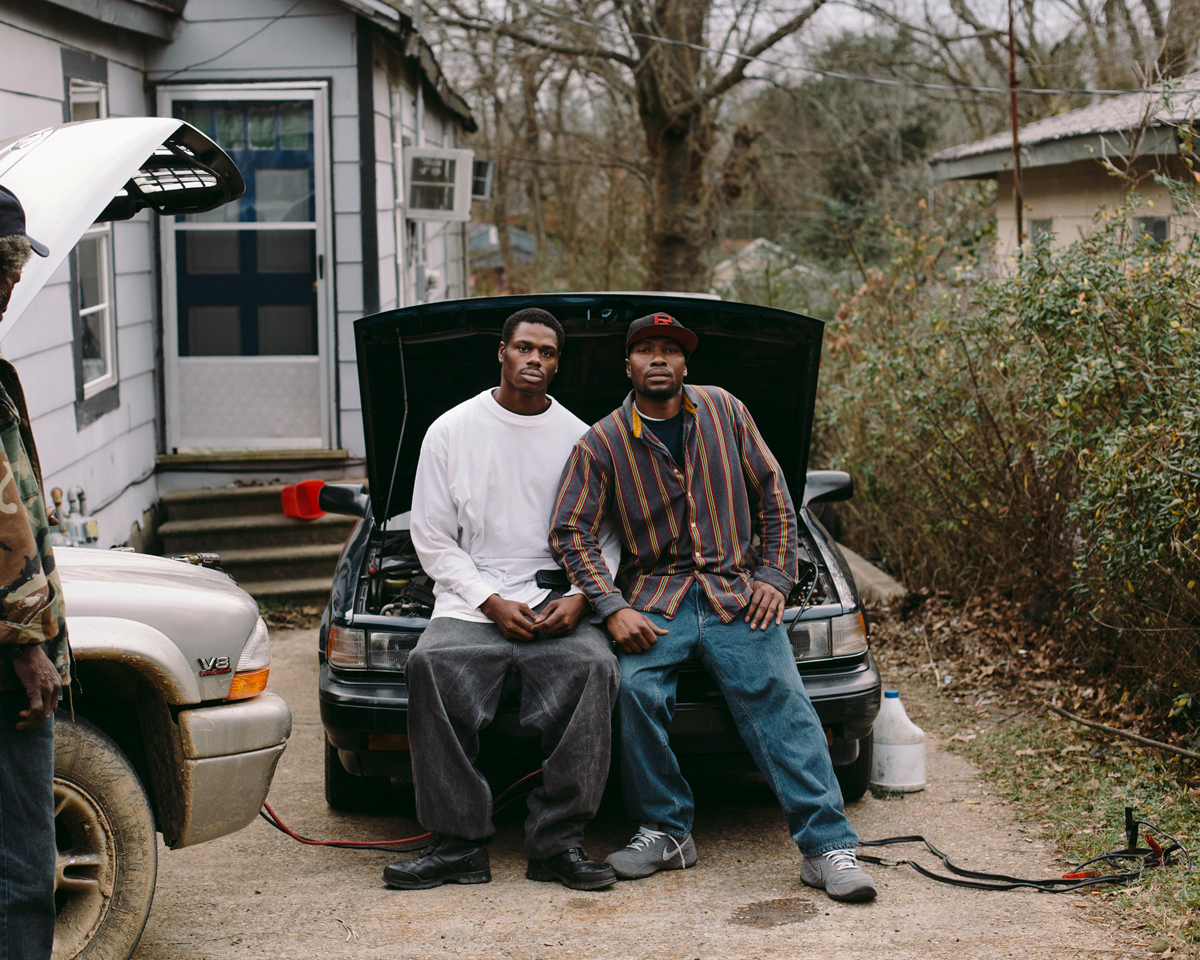
Timothy & Tim
Yeah, that makes a lot of sense I think in terms of attention to detail, I also think that just the overall aesthetic and color of your images mimics color film.
Thank you!
I mean is that something you’re trying doing in post or does it just come natural?
Yes! Certainly that’s the goal while shooting. There seems to be a certain quality about the rendering of light and color when shooting analog that is nicer and more natural looking than most digital images.

Custom Rims
Well, that sort of answers my other question. Have you considered shooting any other mediums like film or video or even recording audio?
Yes, I have. My first attempt at photographing strangers was shot with a cheap medium format Holga. It was quick and loose, and not very threatening or confrontational to the sitter. After this work, I did a small series of simple video portraits with strangers that were similar to Warhol’s Screen Tests. I would set my camera up on a tripod, turn my back, and film for about five minutes without audio. This is an idea that I think I’ll come back to one day.
I shoot with a canon AE1for personal photographs and when I’m traveling. For Christmas my uncle gave me a Mamiya 645 that I’d like to begin using more. Since most of the work I enjoy and study are made with a 4×5 view camera, and that’s sort of the tradition for the type of work I like to make, I would like to begin working that way in graduate school. I think to some degree I’m a bit nervous to begin working with a view camera, but also completely excited about the idea of slowing down a little when making photographs. [haha]
Yeah, that’s really interesting. It sounds pretty nice. We’d love to see those.
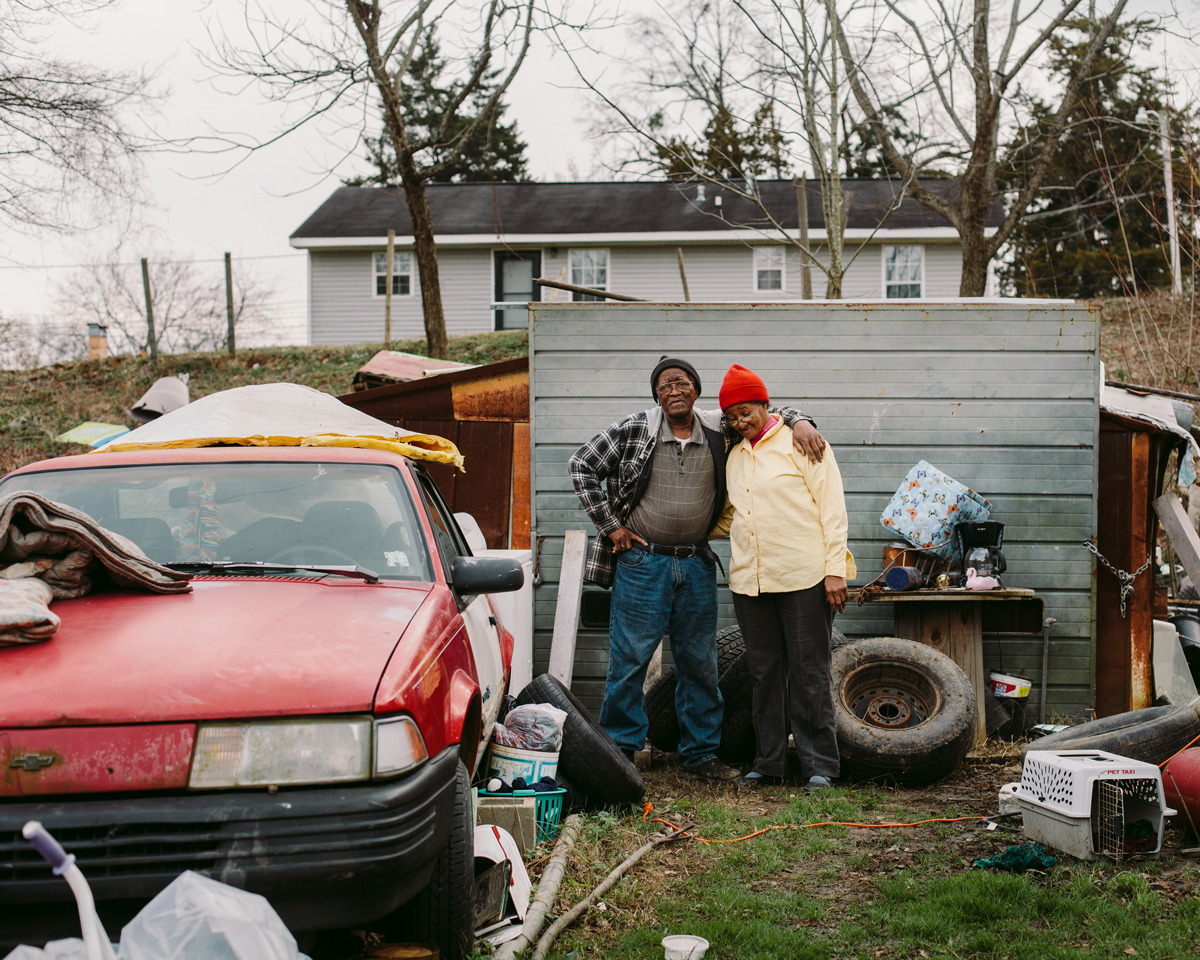
Mr. Thomas & Mrs. Nora
So let’s talk about how your peers responded to this work, specifically in your classes when you showed them in critiques.
Oh yeah! Well, its kind of hard to answer, I don’t know if my peers really knew how to react to the images. Maybe they didn’t understand why I loved shooting these subjects. I feel like the conversation was never very critical but I understand that speaking in an environment like that can be difficult sometimes. I think most of the questions asked about my work was about aesthetic – “Why do you always put your subjects in the center?”
Yeah, I mean we can relate to that. We had very similar dialogues in our critiques, very low conversations, and you do have to rely on your professors a lot to get the feedback that will actually push the body of work in the right direction.
At any level, I think, it’s rare to have people care about work that’s not their own, and to be able to talk about it objectively and enthusiastically. I don’t know. That situation can be very tense and unnatural.

Perry & Charles
So you mentioned wanting to go to graduate school, do you know where you’d like to go, have you been applying to any?
I applied to several schools. The way in which I went about applying to specific schools was based on a few things: funding, location, faculty, and I also looked at the work that was being made by graduate students.
Very nice. That’s great, man! So regardless of where you decide to go or where you get in, do you want to continue this type of work? Meaning that you’re working within the African American communities and the concept around interacting with ‘strangers’.
Yeah, I think that I’ll always be interested in this work based on where I’m from and the situations that still exist here. For now, I’m going to continue photographing African Americans because it’s still challenging. I question, probably too much, and doubt what I’m doing every day! Some days I decide I’m going to photograph something different but I cant seem to escape going back to the same places. For me right now, the idea of photographing white men seems too easy. I think I’ll also continue working with strangers as well. I feel a bit more comfortable when working with people I haven’t met before. When I’m taking pictures, it’s a very personal and intimate experience for myself – one that I think I’m a little scared to share with certain people. I feel a little more anonymous, maybe. I’m certainly interested to see how a new environment will affect my imagery.
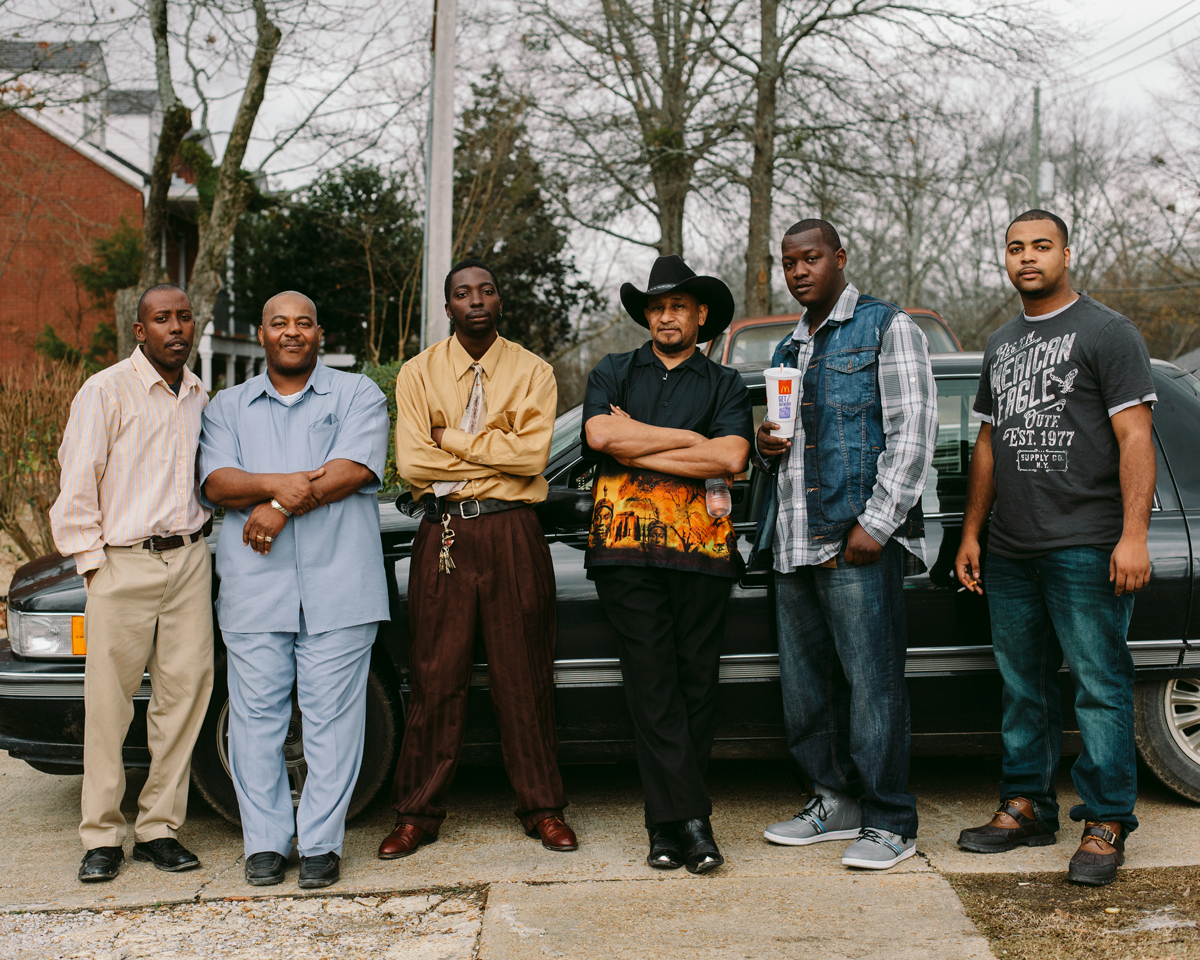
Derrick, Odis, Willie, Billy, Tae, & Eric
It does! So how do you feel that your work represents the South, I know that you said that you cant necessarily escape this region. Can you speak on that a little?
Looking back, I kind of hate the title because I’m saying this is definitely of the South but at the time that’s what I wanted to do. I think that some of the specific imagery in the photographs like the cars, men smoking, and camouflage are some things that represent this specific group of people living in the South. In some ways, I was pointing my camera at stereotypes of a people group, but they are also accurate in a way.
Yes, it’s hard to ignore stereotypes sometimes, especially when seeing them in real life.
I think sometimes people in the South want to believe certain issues don’t still exist, but I think my work is about challenging or confronting that.
Yes, absolutely! So I think we should wrap up with the future of your work and career. You’ve been starting to work with galleries and things. Do you have gallery representation right now?
No, my teacher started sending me links to shows that deal with identity or places or portraiture. Those are kind of the shows that I submit to, like juried exhibitions. So that’s how that comes about. But then, when I was still living in Starkville, I forget when I was contacted, maybe April-June of 2013, by Alan F. Rothschild, the creator of The Do Good Fund. He contacted me and this was amazing this was kind of right at the beginning when he was starting this collection, and I wasn’t sure what was going on. I was like ‘This guys wants to buy my photographs? What does this even mean? ‘Cause no one buys photographs and no one buys mine’ and I’m not used to that.
But, Alan contacted me and said, ‘we’re trying to start this initiative of collecting southern photography and exhibiting in places where people can’t necessarily afford to go to a museum and see it, so we’re trying to bring it to other places. He found my work through the internet or through my school maybe. I sold him two photographs and I look at the website everyday now because I’m quite amazed at the company that I’m surrounded by, of everyone else’s work he’s reached out to or just acquired. It feels amazing. Through that I’ve had some really fortunate things happening lately. So I don’t know if you’re interested in all that anyway… Ok, so are you guys aware of Oxford American’s Eyes on the South?

Orange House
Yes, our friend Jeff Rich runs that section of the site.
Yeah! Jeff Rich is also a part of the Do Good Fund and saw my work and through that asked me if I’d like to be a part of it and I was like “of course!” It’s such good company. My mind is… I can’t explain it really.

James, 24
It is a pretty incredible list on there. I personally know a lot of these people that are just so talented. It’s funny actually, Jeff Rich was our professor. He used to teach at SCAD before he moved to Iowa this past year. We are hopefully going to see him next week!
How was he as a professor?
He was really talented photographer and a very nice guy.
I kind of wish I would have applied to Iowa after seeing that he worked there.
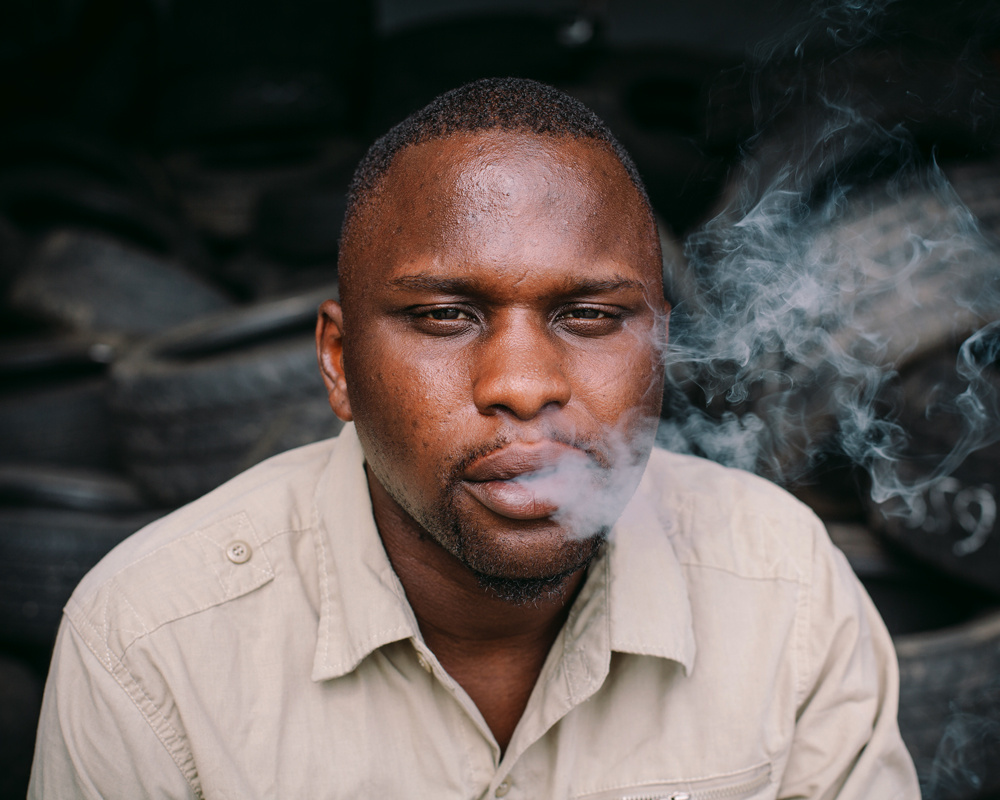
Antonio’s Brother
Jeff is the type of guy if you ever wanted to email him to critique your work I know he would love to help out in any way.
That’s fantastic. When it hadn’t been published yet on Oxford American, I sent him an email kind of saying how thankful I was and I told him “If you ever need anything, let me know” and he said “I might actually take you up on that.” I guess he’s trying to make more work on the Mississippi River and he was like “Maybe I’ll be down in Memphis and I might need something from you.” I said that’d be great. I’m kind of just overwhelmed by everything right now.
You should be excited! You’re making really good work and its getting the attention it deserves.
Thank you so much. And another thing, I love the work that ya’ll feature and its crazy that you wanted my work to be on the website.
Thank you. That’s very nice of you! Thanks for taking the time to talk with us. We really appreciate it!
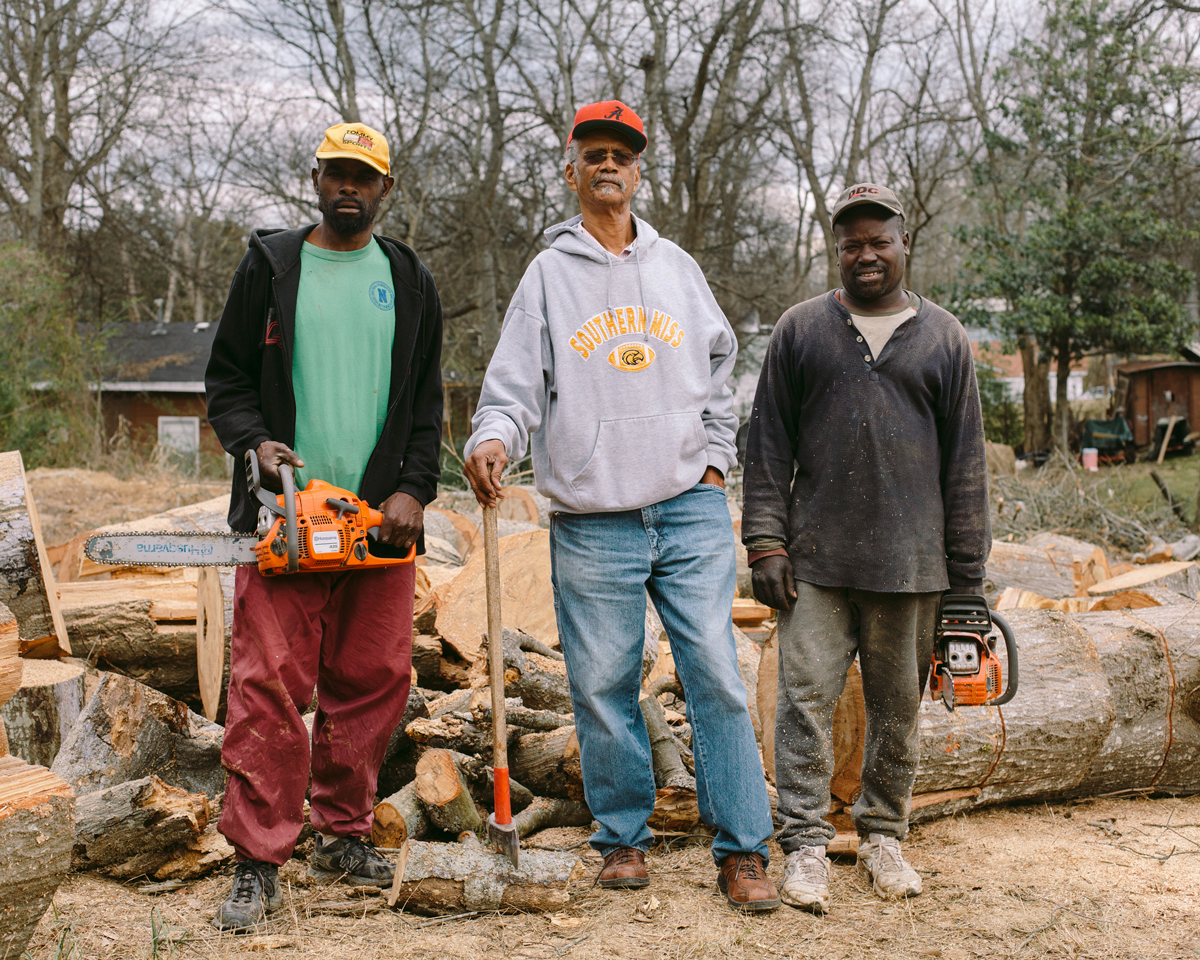
Frederick, Coach, & John Outlaw
“I can’t say for certain what it is that drew me to these places, but I can say I had a sincere interest in the people that lived there, the unique styles of clothing they wore, and the vibrant colors that surrounded them.”
To view more of Whitten’s work please visit his website.